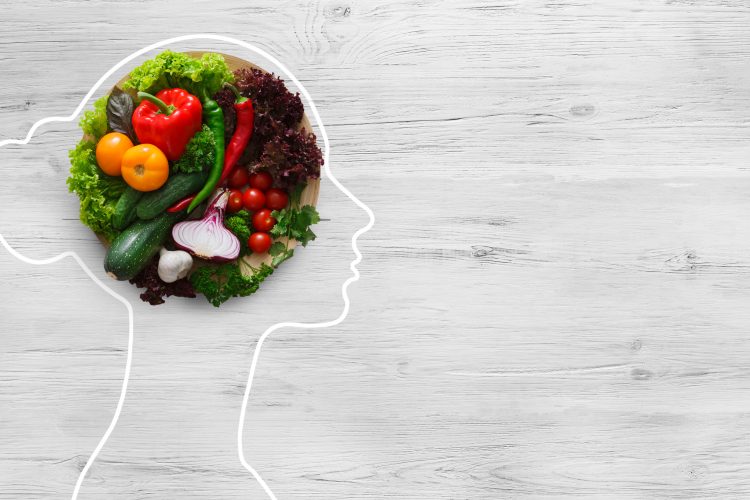How we judge food
- Like
- Digg
- Del
- Tumblr
- VKontakte
- Buffer
- Love This
- Odnoklassniki
- Meneame
- Blogger
- Amazon
- Yahoo Mail
- Gmail
- AOL
- Newsvine
- HackerNews
- Evernote
- MySpace
- Mail.ru
- Viadeo
- Line
- Comments
- Yummly
- SMS
- Viber
- Telegram
- Subscribe
- Skype
- Facebook Messenger
- Kakao
- LiveJournal
- Yammer
- Edgar
- Fintel
- Mix
- Instapaper
- Copy Link
Posted: 12 April 2022 | Bethan Grylls (New Food) | No comments yet
Food and drink producers must consider the multi-sensory experience to ensure a fulfilling end result, but it’s important we don’t judge a book by it’s cover…


As a consumer, we may not consciously consider the multi-sensory experience of our food and drink, but if it’s negatively influenced it’s certainly not something we’ll easily forget.
Along with the food safety aspects that a brand must address (amongst a plethora of other requirements), the sensory experience is one of utmost importance for both the manufacturer and the ‘deliverers’ of food (ie, retailers, hospitality).
Every meal presents a sensory opportunity comprising colour, shape, smell, sound and texture, and it may be surprising to note that it’s not just the food that affects that experience; packaging, surroundings, previous experiences, and even the weight and type of cutlery used to eat it all play their parts.
Indeed, researchers from Oxford University revealed that heavier cutlery is associated with a more positive experience, while cheese tastes saltier when eaten with a knife over a fork or pick, and white spoons make white yoghurts sweeter than if eaten with a black spoon.1 Who knew!
What’s more, studies have demonstrated that the shape and colour of a container can impact the taste of a drink. A classic example is when Coca-Cola used white cans (instead of red) during a fundraiser campaign for polar bears – despite the recipe not changing, people thought it had.2
A separate study investigated whether glass shape had any impact on taste, finding that the participants perceived beer to be fruitier and more intense when served in a curved side glass.3 Another concluded that 3D-printed surface patterns could also impact the consumer experience. In the study, coffee and a chocolate-based drink were served in 3D-printed cups with angular and rounded surface patterns. The former appeared to increase bitterness and intensity of taste, whereas the latter was perceived as sweeter and less intense.
Of course, the food itself naturally has a huge impact, and it is worth noting the influence that COVID-19 has had, in that many suffered with anosmia (a loss of smell). Before the pandemic, in 2014, Fifth Sense – a charity which carries out research for those with smell and taste disorders – found that 92 percent of its members felt their appreciation of food and drink had reduced due to smell/taste loss, while 85 percent are fearful of being exposed to dangers such as gas and spoiled food.5 The pandemic further emphasised the importance of the sensory experience as millions failed to regain their sense of smell long-term.6-8
Indeed, our senses have a certain hold on us, and a successful food and drink business will utilise this to its advantage. Yet one sense – sight – might need a fresh perspective for consumers and industry alike. We recently took to the streets to interview the public on wonky fruit and veg, and it was surprising how many said that the non-traditional-looking carrot was their preferred buy. The main reason: they feared others would reject it.
Although our vox pop was a modest proportion of today’s society, it serves to indicate a shift in consumer behaviour, that the ‘ugly duckling’ does not always suggest a poor experience. And for those who still desire aesthetically pleasing food, just remember that our brains can trick us into thinking something tastes different or better when in fact, it doesn’t really. Moreover, choosing a wonky carrot once in a while may help reduce one of the biggest greenhouse gas contributors – food waste. I imagine we’ll see a push for wonkier food, but industry shouldn’t wait to be led by conscious consumers, but rather take a proactive approach and educate them around this important topic.
If you fancy learning a little more about senses and consumer behaviour, check out our latest issue of New Food Magazine (Issue 2 2022) where Tracey Sanderson looks at measuring sensory experiences, and Adam Zakaria of Fuller’s Brewery delves into consumer expectations, the impact of spoilage organisms and how microbiology can assist.
References
- https://bit.ly/3uQ4bmF
- https://theweek.com/articles/479739/cocacolas-whitecan-fiasco
- www.sciencedirect.com/science/article/abs/pii/S0950329317301192
- www.sciencedirect.com/science/article/abs/pii/S0950329316302610
- www.fifthsense.org.uk/impact-of-smell-taste-disorders/
- https://www.nature.com/articles/d41586-021-00055-6
- www.smithsonianmag.com/smart-news/up-to-16-million-people-in-the-us-have-long-term-smell-loss-180979092/
- https://abcnews.go.com/Health/covid-19-people-lose-sense-smell-regain/story?id=82353411
Related topics
Food Waste, Quality analysis & quality control (QA/QC), Regulation & Legislation, retail, Supermarket, Sustainability, The consumer









